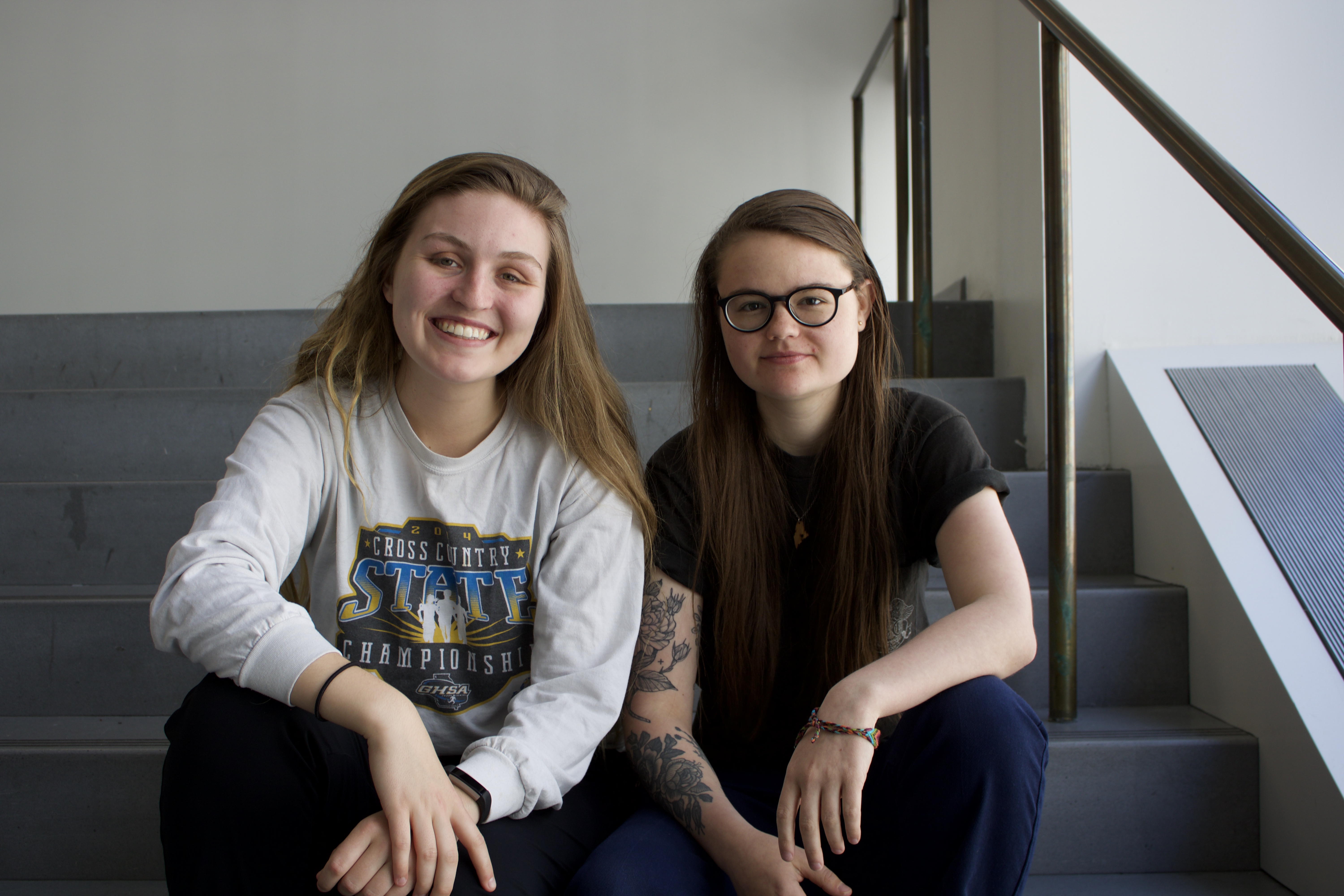Two Parsons photography students will be screening their experimental short films at Tribeca Film Festival on April 29.
Bronwen Wickstrom, 20, and Alexandra Sapp, 21, were two of the 18 candidates whose films selected for Tribeca Film Institute’s “Our City, My Story” showcase during the 2018 Tribeca Film Festival.
“Our City, My Story” showcases shorts “that capture the fabric of New York City, as told through the perspectives of young filmmakers 21 years of age and under,” according to their website. Films selected for the showcase had to be made in the state of New York.
Of the 18, four films will be picked for best documentary, best narrative, best experimental and best animation with a $500 prize each.
Both of the student films, which don’t have dialogue, were produced this semester in a Parsons photography course, Core Studio 3 taught by Orit Ben-Shitrit.
Their also both experimental with one featuring a young girl being chased through a field while another creates tension around a mute dinner conversation.
Wickstrom, 20, a photography major, was motivated by the close-knit community of the class and the photography program.
“The professors and the peers I’ve interacted with within the program are my driving force,” Wickstrom said.
“My professor was a huge part of that and opened my mind to what video work could be,” she added.
The professor, Ben-Shitrit, hoped to broaden the students’ horizons with the project.
“The goal that I set for myself is to prepare them to develop a self-reliant practice, with at least one portfolio piece that they are proud of and can showcase a year later when they graduate,” Ben-Shitrit said.
“This may seem like a moot point, but the dedication of faculty and staff is critical to student’s excellence. I try to complement it in my classes, by fostering a togetherness, a sense of community, that makes it clear: we all care about each other and we want to see each other succeed,” Ben-Shitrit said.
Wickstrom works primarily in film photography and analog photography. Her Tribeca short, “Intervention,” was the first time she had worked with video as a medium.
Wickstrom also built the sound for the piece, which transitions between instrumental music where the viewer can hear notes of bells chiming. To do that, she drew on technical skills learned in another Parsons course.
“It’s using all these foreign programs and I guess it becomes part of it… not necessarily knowing all the technical aspects, that’s where it’s a learning process and you can make your best work out of that,” Wickstrom said.
“Intervention” was visually inspired by Canadian photographer Edward Burtynsky’s series, “Tailing,” which features photographs of the aftermath of metal mining for sources, such as gold or copper, and smelting. Wickstrom’s previous works have a strong focus “on human intervention on nature,” she said.
The film follows two people, a man and a woman, chasing a girl with platinum blonde hair draped in a red sash as she runs through a field in Rockefeller State Park in Sleepy Hollow, New York. The actors in the film communicate through distressed facial expressions, wordlessly arguing back and forth. The characters are dressed in long, earthy colored garments, matching the hues of the dead vegetation behind them.
“I’m originally from Maine, so I’m from a very natural environment and moving to New York has been an experience itself,” Wickstrom said. ”It’s kind of chronicling my experience in an unspoken way.”
Alexandra Sapp, a third-year Parsons student studying photography and minoring in culture and media at Lang, drew on the discomfort of adolescence to make a metaphorical film about confronting people from the past titled, “(DiS)CONNECTED.”
It follows two girls uncomfortably dining at a table together with their meal is being continuously disrupted and controlled by a pair of hands wearing white gloves. The two people are communicating in nonverbal ways, hence the title.
The film is intentionally very surreal and strange. By depicting many different lightings and uneasy associations, the existing tension between the two characters is clear, but the source of the tension is never explained.
“I don’t really want the viewer to fully understand the film,” Sapp said. “I kind of want people to come to their own conclusions, and for them to be like ‘What’s going on?’ It’s supposed to feel like in between a reality and a fantasy, which creates the surrealism.”
“The dinner scene has different courses that represent different years and narrate different memories,” Sapp added.
This is the first film that Sapp has directed and produced on her own. She cast for the film and collaborated with Joselyn Chu, an NYU student studying music, for the sound. Originally, the film featured dialogue. However, after the attempt to work with a verbal script the for characters failed, Sapp decided to use sound as a way to guide the audience. “I wanted sounds on their actions to help narrate the story, whether it’s them eating, chewing, or lifting a phone. I wanted to make it kind of humorous.”
Sapp grew up in St. Simons’ Island in southeast Georgia. She likes to explore societal values that are thrown on teens like religion, class, and race.
“I’m just interested in the demographics and how the way you live can influence how you grow up and how you’re perceived as,” Sapp said.
Sapp stressed the experimental nature of the film, and how it focuses on a feeling rather than a specific situation or person.
“It’s about my experience growing up and the people around me at the time,” Sapp said. “The hand represented entities that got in the way of me and these specific people and either worsened or bettered the certain situations.”
Photo by Orlando Mendiola







